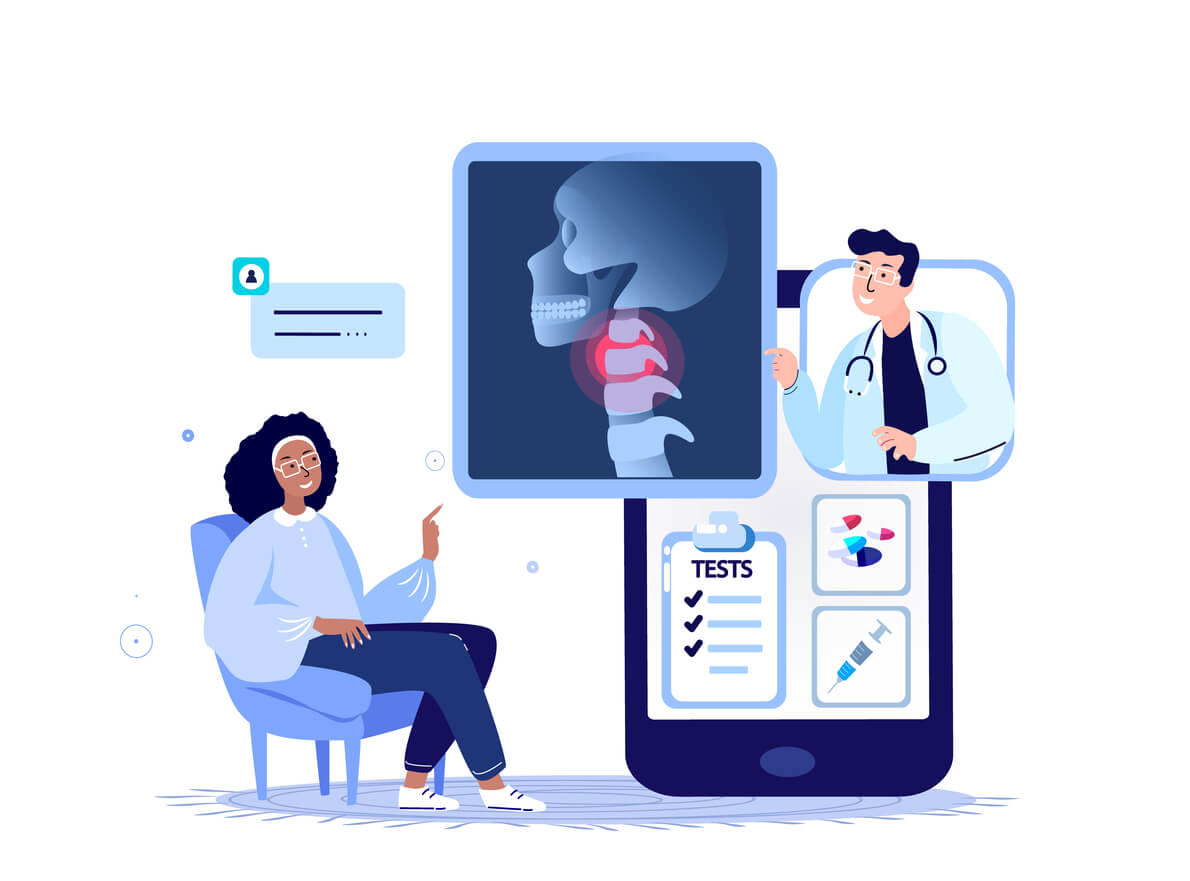What causes neck and back pain?
Back and neck pain are very common, with lower back pain affecting 70-90% of people at some point in their lives. For most people, pain is short-lived and resolves completely. However, some people continue to experience pain for months or years. Chronic neck or back pain can interfere with your ability to work and participate in family, leisure and community life.
You may be at risk of back pain if you’re older, smoke, don’t get much physical activity, or have overweight or obesity. However, neck and back pain can affect anyone at any stage of life.
Neck and back pain can come from things that affect any of these structures, including:

Spinal injuries or diseases – such as arthritis, osteoporosis, fractures and soft tissue sprains or tears.
Spending too long in one position – such as sitting at your desk.
Muscle spasm or tension.
Overuse, degeneration or weak muscles.
Infection.
Back and neck pain symptoms
Spine problems can cause a range of symptoms, including:
Pain in the neck or back – which may be sharp, dull, throbbing, or burning.
Weakness, numbness or tingling in the arms or legs.
Pain radiating into the arms or legs.
Stiffness anywhere along the spine.
Changes in posture.
Headaches.
How are neck and back problems diagnosed?
A qualified healthcare professional such as your doctor or physiotherapist will ask you some questions, like how symptoms started, what makes them worse or better, and how they affect your daily life.
They will also look at your spine, checking for things like tenderness and painful or limited movement. You might be referred for imaging tests (such as an X-ray, MRI or ultrasound), although these are often not necessary or helpful in cases of chronic pain. Blood and other laboratory tests may help rule out other causes for your symptoms.
You might be referred to an orthopaedic specialist for an expert opinion and guidance with treatment decisions.
Neck and back pain treatment
Managing back and neck pain is about relieving symptoms and helping you get back to everyday activities. Nearly all cases can be managed effectively without surgery.
Non-surgical management of neck and back pain
Treatment aims to relieve pain, restore movement and help you get back to
your usual activities.
Non-surgical treatments for ankle and foot injuries
include:
Self-management
This is the cornerstone of managing neck and back pain. It might include:
• Lifestyle changes – such as getting support to quit smoking or achieve a healthy weight
• Self-directed light exercise – including fitness, core strength and stretching exercises
• Environmental changes – such as a sit/stand desk at work
• Using heat or cold packs to ease symptoms.
Physiotherapy
A physiotherapist can provide education and advice about your condition and give you tailored exercises to improve spinal flexibility and muscle strength. Passive treatments such as massage or manipulation are not usually helpful for managing chronic pain.
Psychology
Cognitive behaviour therapy can help if chronic pain is affecting your mental wellbeing, or you are experiencing anxiety or depression.
Medications
Over-the-counter pain killers and anti-inflammatory medications often provide relief. Your doctor might prescribe other medications to ease a flare-up or help with chronic pain.
Injections
Steroid injections into the affected area may help to relieve inflammation and pain.
Radiofrequency ablation
This procedure involves quietening down parts of the nerve that are sending pain signals to your brain.
Surgery for spinal pain
Occasionally, your orthopaedic specialist may recommend an operation. After surgery, you will probably need some physiotherapy or rehabilitation to restore your mobility, strength, and function.
Procedures used to manage spinal pain include:
Spinal fusion
This aims to ease pain by preventing movement of an affected joint. Your surgeon will remove the soft tissue between two vertebrae and replace it with bone or metal. Over time, the bones fuse together – just like the ends of a broken bone knit together. With the painful joint no longer there, symptoms should go away.
Decompression
This procedure aims to relieve pain by reducing pressure on nerves. Your surgeon may trim away bony spurs or bulging disc material or create a wider opening to give the nerve more freedom to move.
Disc replacement
This involves relacing a damaged or degenerated disc with an artificial one.
How long does it take to recover from back and neck pain?
There is no cure for chronic neck or back pain, but most people can manage it successfully with self-care and lifestyle changes.
If you have spinal surgery, recovery time will vary depending on the procedure and things like your age and general health. It takes about three months for bones to heal. You can expect continued improvement for a year or more after surgery as you regain strength and flexibility.
Your doctor can talk to you about how long it might take you to recover from your symptoms or from
surgery.
References
https://www.healthdirect.gov.au/back-pain
https://www.betterhealth.vic.gov.au/health/conditionsandtreatments/back-pain
https://www.mayoclinic.org/diseases-conditions/back-pain/symptoms-causes/syc-20369906
https://my.clevelandclinic.org/health/treatments/17411-radiofrequency-ablation#
Reviewed by Dr
Craig Timms, Neurosurgery at Holmesglen Private Hospital.
Our Hospitals
Find out more about the orthopaedic services at our hospitals.
NSW
Campbelltown Private Hospital
Hunter Valley Private Hospital
Nepean Private Hospital
Newcastle Private Hospital
Northern Beaches Hospital
Norwest Private Hospital
Prince of Wales Private Hospital Sydney Southwest Private Hospital
QLD
Brisbane Private Hospital
Gold Coast Private Hospital
Peninsula Private Hospital
Sunnybank Private Hospital
Contact Us
Need further assistance? For general queries on orthopaedic services at Healthscope, please contact us below. We're here to help.



